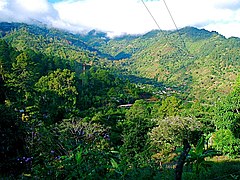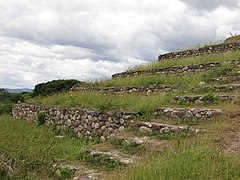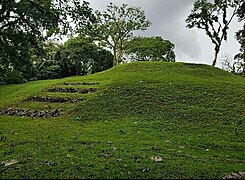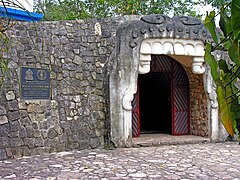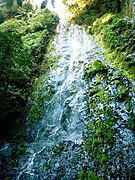Tourism in Honduras


Honduras is a touristic destination that attracts visitors due to its natural environment, white and dark sand beaches, coral reefs, abundant flora and fauna, colonial era towns, and archaeological sites. Other attractions include the area's customs and traditional foods. In 2019 Honduras received 2.8 million foreigners, half of those tourists are cruise passengers.
History

The territory of modern Honduras was discovered in the fourth trip of Christopher Columbus between 1502 and 1503, at that time it was called Guaymuras or Hibueras by local Indians, was followed by the conquest of the inhabitants and later the exploration of land, which involves the making both geographic maps, as coastal charts and of navigation.
In 1526 the conquistador Don
Later
Jesuit priest
The dedication of the Bishop of Honduras at that time Friar
In 1805 Colonel Ramón de Anguiano also reported on population census, the problems of the province and the attack at Trujillo by the British this came the idea of putting more defense in the Fort of Santa Barbara and send to build the Fortress of San Fernando the largest Spanish fortification in Central America; with the arrival of the Abbe Brasseur de Bourboug to the site of Copán in 1864, was impressed by the Mayan remains, also in a note of that year it appears as are and his companions the Mrs. Rob Owen and Osbert Salm taken pictures of the place. 1855 George Eprahim Squier published his notes on Honduras, in the work The States of Honduras and San Salvador. Squir, came to Honduras through the construction of Honduras National Railway.[2] For 1857 the Spanish Antonio Calvache publishes a brochure about his explorations in Honduras.[3]
Early tourism
in 1881 reached Copán the English archaeologist Alfred Percival Maudslay who makes the deepest studied of this Mayan site, then come other scientists, professionals and scholars who have participated in giving to the world, how is Honduras and many others in the US, Europe and Asia, were perplexed by the stories and details embodied in them, so they started the tourist "boom" to these lands. Another important factor was the arrival in the final decade of the 19th century and beginning of 20th century of the US transnational banana companies like Vaccaro Bros., the Standard Fruit Company, etc. who besides source work, several were the Americans who did so to speak tourism from that country to the Honduran north coast, thus forging a shipping tourist route.
First Honduran tourist route

Since the first decade of 20th century American tourist boats made the following route of the points considered most tourist highlight. With the increase in the presence of North American companies in Honduras, exoticism and beaches began to be attractive to Americans, with several moving to the Honduran coast for vacations.
Vapors ships departed from
20th century

The increase in cruise trips made the Honduran coast a common destination for ships. Tourism in Honduras saw a huge increase in the 1970s and 1980s with the increase of American and European tourists. This prompted the creation of hotels in various Honduran cities. Another factor that helped increase tourism in Honduras was that it was quite cheap to stay in the country, given that the products were very cheap, in addition to the fact that Honduras already had a route tour.
Modern day
With the arrival of the new century, Honduras pointed to be a massive tourist attraction for nationals and foreigners. This was seen in the restoration of colonial historic centers, the increase in street remodeling, also with an increase in advertisements in order to increase the tourist flow in the country. Currently, Honduras is a tourist focus due mainly due to its beaches and mountains, although archaeological tourism has also gained some notoriety. Another attraction are the so-called tourist routes that one can follow.
Tourist diversity

Honduras is visited by visitors from around the world for several reasons, including the visit of its forests, islands and beaches by cruise ships, aircraft or road, being its main engines eco-tourism, cultural tourism and archaeological tourism.
Ecotourism

Honduras is an ideal place for eco tourism, has many forests, beaches, coral reefs and a variety of protected areas ideal for sightseeing. Honduras is home to an estimated 8,000 plant species, about 250 reptiles and amphibians, more than 700 species of birds [4] and 110 species of mammals, distributed in different ecological regions of the country.
Honduras is very popular because of the beauty of the coral reefs in the Bay Islands, the Cochinos Cays and the beautiful beaches in Roatán. Another tourist destination is the Río Platano Biosphere, among other points of special interest [5]
Gallery
-
Coral reef at Roatán
-
La Tigra national pak
-
Cusuco national Park
-
Pulhapanzak waterfall
-
San Antonio River
Archaeological tourism

Always in the 19th century was when experts archaeologists, epigraphers and Mayanists they were dumped in to the rescue of the city of Copán is as the government of Honduras implement an economic program and cooperation with international organizations, universities and specialized museums with the sole purpose of preserving the archaeological site. In turn, placing it on the tourist map with other Mexican and Guatemalan Mayan cities, which were the first to be opened to the public. Honduras currently has museums exclusively with remains of the Mayan civilization.
There is a strong interest of the international community for archaeological sites like the city of Copán was built and occupied in a period where the Mayan culture had its most literal expression, ruled by a dynasty of 16 kings The Mayas of Copán built many temples, altars and steles in high and low relief, also has the ball park, is one of the most visited by tourists in Honduras.
Archeological sites:
- Copán
- Cuevas de Talgua
- El puente
- El rastrojón
- El Curruste
- Rio amarillo
- Las sepulturas
- Los Naranjos
- Tenampúa
- Yarumela
Gallery
-
Copan Archeological site.
-
Pyramid at el Chilcal de Yarumela site.
-
Estructure IV at Los Naranjos Park
-
Pyramid at El puente Archeological site.
Cultural tourism

Honduras possesses an invaluable cultural heritage, a mix between Spanish, Indigenous, and African traditions. Both in music, arts, dance, and popular culture. One of the most famous characteristics of Honduras in the music and dance of the Gafrifunas in the Caribbean dance that has become a symbol of Honduran identity. Another cultural characteristic of Honduras are the Holy Week carpets, a tradition of Spanish heritage.
Gallery
-
Punta dance
-
Holy week carpet in Tegucigalpa
-
Honduran traditional dance
-
Cantarranas murals
Museums

Honduras has a variety of museums, among which are the Villa Roy Republican History Museum, the Museum of the Honduran Man, the Museum of Anthropology and History, the Honduran Aviation Museum and Museum of National Identity (Honduras), among others.
- Archeologcial museum of Comayagua
- National Archives of Honduras
- National Library of Honduras
- Museum of the Casa Presidencial of Honduras,
- Barracks San Francisco Military Museum,
- Museum of Tegucigalpa cathedral
- Museum of Banco Atlantida S.A.,
- Museum of religious art
- Mayan Sculpture museum
- Museum of Central Bank of Honduras,
- Pinacoteca of Central Bank of Honduras,
- Tela Railroad Museum
- Manuel Bonilla National Theatre,
- Museum of Anthropology and History (Honduras),
- Museum of National Identity (Honduras),
- Museum of the Honduran Man,
- Honduran Aviation Museum,
Gallery
-
Old presidential palace of Honduras Museum
-
Museum for National Identity
-
Mayan sculpture museum
-
Museum of religious art
-
Tela Rail road company Museum
Historical tourism
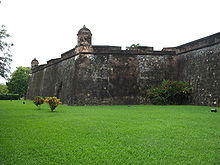
Since the 2000s the IHAH (Honduran Institute of Anthropology and History) has begun to improve the historic urban centers and various old buildings. The clearest example is the enormous restoration of historic buildings in colonial cities such as Comayagua.
- Fortress of San Fernando, Omoa
- Old presidential palace of Honduras, Tegucigalpa
- Basilica of Suyapa,Tegucigalpa
- St. Michael Archangel Metropolitan Cathedral, Tegugucigalpa
- Inmaculate conception Cathedral, Comayagua
- Caxa Real, Comayagua
- Metropolitan Cathedral of San Pedro Sula, San pedro Sula
- Fortress of Santa Bárbara, Trujillo
- Fort San Cristóbal, Gracias
-
Santa Barbara fortress
-
San Cristóbal Fortress
-
Our Lady of Suyapa Basilica
-
Tegucigalpa Cathedral
Coastal tourism
Honduras has several tourist spots on its coasts, including:
Gallery
-
Trujillo coast line
-
Coxen hole in Roatan.
-
Dock at La Ceiba
-
Beaches at Cayos cochinos in Chachahuete community.
-
View of Yojoa lake
-
Port of Isla del tigre in Ampala.
Tourism to interior of the country

It also has places of interest to visit in the interior of Honduras, in the Honduran territory can be found in their municipalities, examples of the Baroque architecture of the Spanish colonization, churches that hold to the Christian tradition of making its temples in Latin cross, altarpieces, altars and images, evoke the colonial past.
- Comayagüela,
- San Pedro Sula,
- La Ceiba,
- Comayagua,
- Choluteca,
- Tela,
- Santa Rosa de Copán,
- Siguatepeque,
- Gracias,
- Ojojona,
- Catacamas,
- Santa Bárbara,
- La Esperanza,
- Danlí,
- Juticalpa,
- Ocotepeque.
-
Town of Ojojona.
-
Cathedral of Comayagua.
-
Town of Santa Lucia
-
Waterfall at La tigra national Park
-
Town of Yuscaran
-
Cathedral of Amapala
Sports tourism

Honduras is a country where sport is a daily element of daily life, the country has several stadiums and public sports facilities such as for football, basketball, baseball, tennis and swimming fields. The most popular sport at the national level is football, and Honduras has one of the best national leagues in CONCACAF, ranking 5th in the top 10 national leagues, its two most successful teams being Club Olimpia and Club Motagua. Their matches are the most watched nationally and the prices for the stadium entrance are accessible to both nationals and foreigners.[6]

In Honduras you can also practice extreme sports like the famous Rafting, being the most famous area where it is practiced in the Cangrejal river in La Ceiba. Another sport is jet ski racing, and Scuba Diving, being this one of the attractions of Honduras, you can dive and observe the coral reef as well as explore sunken ships
-
Chelato Uclés national football estadium
-
Choci Sosa Baseball field
-
Villa olimpica field
-
National Honduran University sports Center
-
Olimpic statium and sportscenter of UNAH
Climate

Another major attraction of Honduras is its tropical climate, has average temperatures above 18 degrees Celsius (64 degrees Fahrenheit) throughout the year, so it never frosts or no snowfall in the region, making it a paradise for tourists from countries of temperate zones.

In Honduras are two seasons, the rainy season between May and November and the dry season, between the months of December to April.
Due to its tropical climate it receives many visits of tourists from North America and Europe during winter between the months of December and March. Also it is visited by tourists from South America, Southern Africa and Australia in its winter months between June and September.
Security
The country has the tourism police of Honduras (policía de turismo de Honduras) responsible for protecting tourists, also provides security the National Police of Honduras, the main contact number is 911. Also the police often have cooperation with Honduras Army.
- Places where to go: Public Ministry of Honduras (Ministerio Público de Honduras), National Police of Honduras (Policía Nacional de Honduras), Honduran Red Cross (Cruz Roja Hondureña), Fire Department of Honduras (Cuerpo de Bomberos de Honduras).
Infrastructure

Honduras has an extensive hotel infrastructure in major cities, many 5 star hotels with swimming pools, cable TV, broadband internet, next to the beach.
Transport

Honduras has many means of transport to move nationwide, with several air routes connecting the country through its main airports, several international ports for receiving cruise ships and tourists. It also has broad highways that connect major cities and extensive network of roads connecting the other cities in the country and a railway system.
Aerial boom

It was after of
Honduran railway

In the 20th century during the presidential administrations of the conservative Captain General José María Medina began with the works of National Railroad of Honduras, devised in the foreground both to unite the north coast to the south coast in the Gulf of Fonseca, but this work because of mismanagement and actors lost credibility and it entangled in a tremendous debt, the lines that were installed not become the planned and the project was stalled, so the banana companies it benefited to transport their products to the Honduran major ports. After the 1920s the train intended for civilians started to carry a modest tourist clientele, but, until recently, that was in a difficult economic position. However, the national railway has managed to restore some machines that transit San Pedro Sula. The railway service in Honduras is seen as more of a tourist attraction than as a means of transport.
Pan-American Highway
The International or
Ministry of Tourism

The head of the Ministry of Culture, Tourism and Sports is responsible for ensuring the maintenance of tourism resources of the country, and to give the necessary attention and publicity in foreign countries, promoting and encouraging these resources in stands of international fairs of societies with greater economic acquisition. Similarly project to Honduran culture within social circles of the world, as national athletes who are the representatives of the distinctive and national colors in world sporting events.
See also
- Secretariat of Foreign Affairs (Honduras)
- Culture of Honduras
- Visa policy of Honduras
- Mesoamerican Barrier Reef System
References
- ^ Enrique Oltra Perales, Denia and its contribution to the evangelization and civilization of America. Valencia, Spain; 1988.
- ^ Latin American Mining: Mining Biographies, 1492-1892. edited by Juan Manuel López de Azcona, Ignacio González Casasnovas, Esther Ruiz de Castañeda (page 461)
- ^ Latin American Mining: Mining Biographies, 1492-1892. edited by Juan Manuel López de Azcona, Ignacio González Casasnovas, Esther Ruiz de Castañeda (page 86)
- ^ "2010 Destination360". 2010 Destination360. 2010. Retrieved February 18, 2010.
700 species of birds that have been spotted in Honduras
- ^ "Portal of the Honduran Institute of Tourism (in Spanish)". Ministry of Tourism. 2011. Retrieved February 25, 2008.
- ^ "HONDURAS". Concacaf. 2021-07-03. Retrieved 2023-01-18.
External links
 Honduras travel guide from Wikivoyage
Honduras travel guide from Wikivoyage


